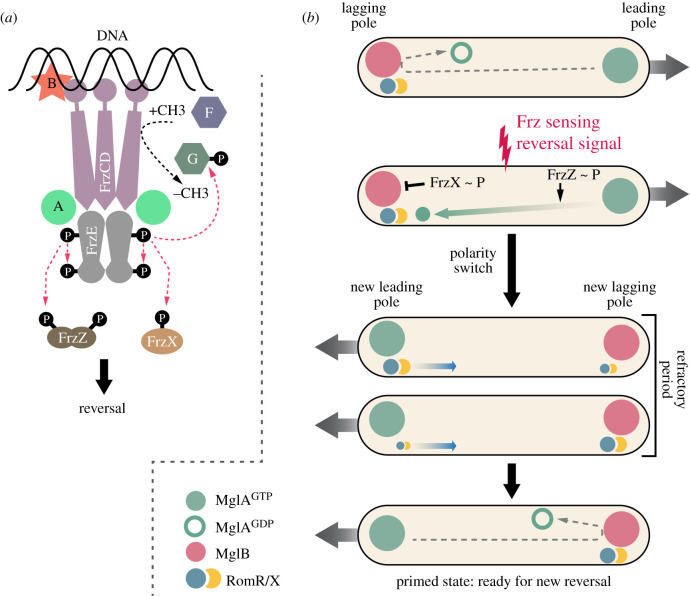Figure 3.
(a) Schematic of M. xanthus Frz pathway. At the surface of the nucleoid, the methyl-accepting protein FrzCD associates with the FrzE histidine kinase via the coupling protein FrzA. Methylation and demethylation of FrzCD is controlled by FrzF and FrzG, respectively. FrzE phosphorylates two distinct response regulator domains: FrzX and FrzZ. The accessory protein FrzB is important for the formation of multiple nucleoid Frz arrays (adapted from [27]). (b) Myxococcus xanthus cell polarity switch is controlled by a gated-relaxation oscillator. Prior to a reversal, MglA-GTP (in green) is at the leading cell pole, MglB (in red) and RomRX (in blue and yellow) are at the lagging cell pole. The cell cannot reverse because the GATE is closed, MglB converting MglA into the GDP-bound inactive state (open green circle). When a reversal signal is perceived by the Frz system, phosphorylated FrzX localizes at the lagging pole and opens the GATE by inactivating MglB. MglA is then recruited by the RomRX complex to the new leading pole, leading to a reversal. After the reversal, RomRX slowly detaches from the pole to accumulate at the opposite pole and interacts with MglB. This process defines the relaxation step for the system and introduces a refractory period during which no new reversal can happen. Phosphorylated FrzZ acts to limit the duration of the refractory period set by RomRX (adapted from [8]).

